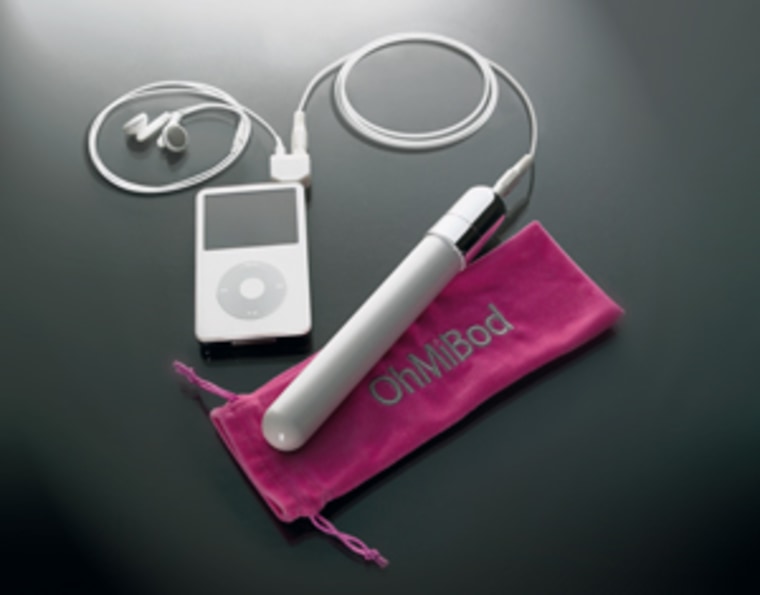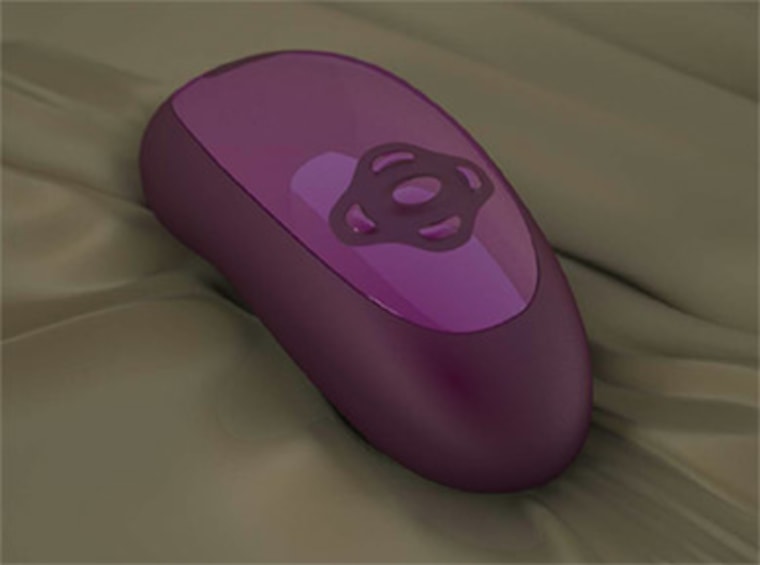Aah, Valentine’s Day.
Some will celebrate the day in all those ways that advertisers says you should — flowers, candy, candlelit dinner, yada, yada, yada.
But for others, technology will enter into the bedroom – or anywhere you choose – and put the whoop in whoopie.
“Using technology to enhance sexual pleasure is as limitless as the imagination,” said Claire Cavanah, one of the co-authors of “Sex Toys 101” and co-founder of the 15-year-old store, Babeland, which specializes in sex education and toys, and is in New York, Los Angeles and Seattle.
Technology “can give your fantasy life a boost through the use of porn DVDs or porn sites, for example,” she said. “Sex toys, even at their most basic, can bring orgasms to people who have never had them, and are now learning their users’ preferences.
“People are also using their phones to stay connected to their lovers through text messaging — to flirt and keep a sexual charge alive while separated. Judging by sales, and mainstream attitudes of greater acceptance for pleasure and sex toys, the demand will continue to grow.”
It’s not like I’m relaying anything shocking.
Tapping into tech
In the last decade, men and women have tapped into their love of technology and devices to facilitate more pleasure.
A 2004 study by The Berman Center, a Chicago-based center that specializes in sexual health and wellness, and Drugstore.com showed 44 percent of women between the ages of 18 and 60 have used a sex toy. And they’re not just talking about single women who use devices in-between relationships. According to the study, 78 percent were women who are in relationships.

Regina Lynn, a writer for Wired.com’s “Sex Drive Daily” blog and author of “The Sexual Revolution 2.0,” writes in her book, “Humans have always sought to sexualize technology and technologize sex.
“As author Annalee Newitz says, humans are a tool-oriented species, however far back you go,” Lynn writes. “So why would anyone think it strange that we bring technology into the bedroom (or in the shower, onto the kitchen table or on the living room rug — you get the idea)?”
Sex and tech are intertwined
On TV and in the movies, sex and technology have been intertwined, feeding our imagination and possibilities for the future.
Fans of “Star Trek” should be familiar with the “holodeck,” a device that simulated real life so much that it served as a way for the crew to get some R&R without ever leaving their ship.
Ralph Fiennes’ character in the movie “Strange Days” showed how people lost themselves in memories, sometimes intimate ones, using devices that allowed them to relive those experiences in 3-D. Even Woody Allen dabbled in the idea with his “orgasmatron” in “Sleeper.”
It was just a matter of time before hard drives were incorporated into one of the most basic of human drives.
Online sex is still going strong and evolving, with Webcam voyeurism and sites like Redtube the new norm, and chatrooms almost nostalgically old school — but still popular.
Gadgets like Web cams, buzzing mice and remote-controlled eggs and bullets (see Babeland’s catalog — babeland.com) are foundations for futuristic hardware that plugs into the USB port of your computer, allowing the sensations to flow from those online turn-ons to the stimulating device of your choice.
Can devices replace flesh and blood?
But there are limits on how far devices can replace flesh and blood.
“The industrial revolution brought us the earliest vibrators, moving pictures led very quickly to ‘blue movies’ and the VCR brought porn into the home, and made the fast-forward button indispensable,” said Cavanah.
“In the realm of sex toys, while technology races forward, and there are little leaps now and again in the application of that new technology, the great leap to satisfying ‘virtual sex’ hasn't been made yet.”
Cavanah said that recently, “some toys have come out that plug into a USB port and allow a remote user to control the toy. That's kind of futuristic, but they haven't really caught on. But by far the most technologically innovative, if less utopian, toys have come from (British company) Je Joue, most recently the SaSi.”
Groovin' gadgets
The SaSi is a customizable vibrator device that comes pre-programmed in different modes, while the OhMiBod ($69) uses the prolific iPod to accomplish the same goals.
You have no idea how the beat of a good song can send you over the edge and the right playlist can make that ride as slow or as fast as the user prefers.
The SaSi ($175) remembers what you like and you can program it to satisfy your needs — taking the usual experience up another notch.
And its appearance is much more discrete than your usual garden-variety vibrator. (Keeps the embarrassment over the accidental discovery by mom to a minimum.) It will be available in the U.S. in April.
Is virtual sex on the horizon?
So what’s next? Are we headed toward virtual sex anytime soon or are we going to try out some more hardware?
Carol Green, a writer and “cultural sexologist” who has a Ph.D in education in human sexuality, said one technology now in its infancy it to employ a computer “to connect two vibrators and the people using them, across the world.”
She also thinks there will be progress with "teledildonics" and the idea of using “sensor-packed suits to put us into the action in a porn movie, for example, or even just make love with a partner across distance.”
Green, who is also the co-founder of San Francisco's Center for Sex & Culture, said such changes will take a few more years of technological development, because the tech involved currently in advanced brain scanning methods will likely be the key to opening this currently locked door.
Regina Lynn regularly thinks “outside the vibrator” on her site, including the possibilities of sex with robots.
We’ve seen them in movies for years, played by the likes of Winona Ryder, Sean Young and John Malkovich (did you think we’d forget “Making Mr. Right”?).
They’re actually more human than human — because we can theoretically program them to be.
So perhaps, this is the ultimate in cybersex, something that takes us out of our heads — although some might say that’s where the best sex has to begin — and into a world with walking, talking, fully functional partners who never complain, who live to serve, who would call when you want them to call, and who can be programmed to do better.
Talk about the ultimate hardware.
